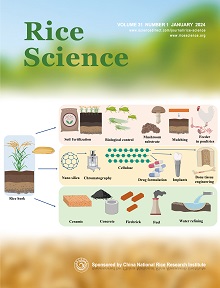Simultaneous stresses of salinity and drought often coincide during rice-growing seasons in saline lands, primarily due to insufficient water resources and inadequate irrigation facilities. Consequently, combined salinity-drought stress poses a major threat to rice production. In this study, two salinity levels (NS, non-salinity; HS, high salinity) along with three drought treatments (CC, control condition; DJ, drought stress imposed at jointing; DH, drought stress imposed at heading) were performed to investigate their combined influences on leaf photosynthetic characteristics, biomass accumulation, and rice yield formation. Salinity, drought, and their combination led to a shortened growth period from heading to maturity, resulting in a reduced overall growth duration. Grain yield was reduced under both salinity and drought stress, with a more substantial reduction under the combined salinity-drought stress. The combined stress imposed at heading caused greater yield losses in rice compared with the stress imposed at jointing. Additionally, the combined salinity-drought stress induced greater decreases in shoot biomass accumulation from heading to maturity, as well as in shoot biomass and nonstructural carbohydrate (NSC) content in the stem at heading and maturity. However, it increased the harvest index and NSC remobilization reserve. Salinity and drought reduced the leaf area index and SPAD value of flag leaves and weakened the leaf photosynthetic characteristics as indicated by lower photosynthetic rates, transpiration rates, and stomatal conductance. These reductions were more pronounced under the combined stress. Salinity, drought, and especially their combination, decreased the activities of ascorbate peroxidase, catalase, and superoxide dismutase, while increasing the contents of malondialdehyde, hydrogen peroxide, and superoxide radical. Our results indicated a more significant yield loss in rice when subjected to combined salinity-drought stress. The individual and combined stresses of salinity and drought diminished antioxidant enzyme activities, inhibited leaf photosynthetic functions, accelerated leaf senescence, and subsequently lowered assimilate accumulation and grain yield.

